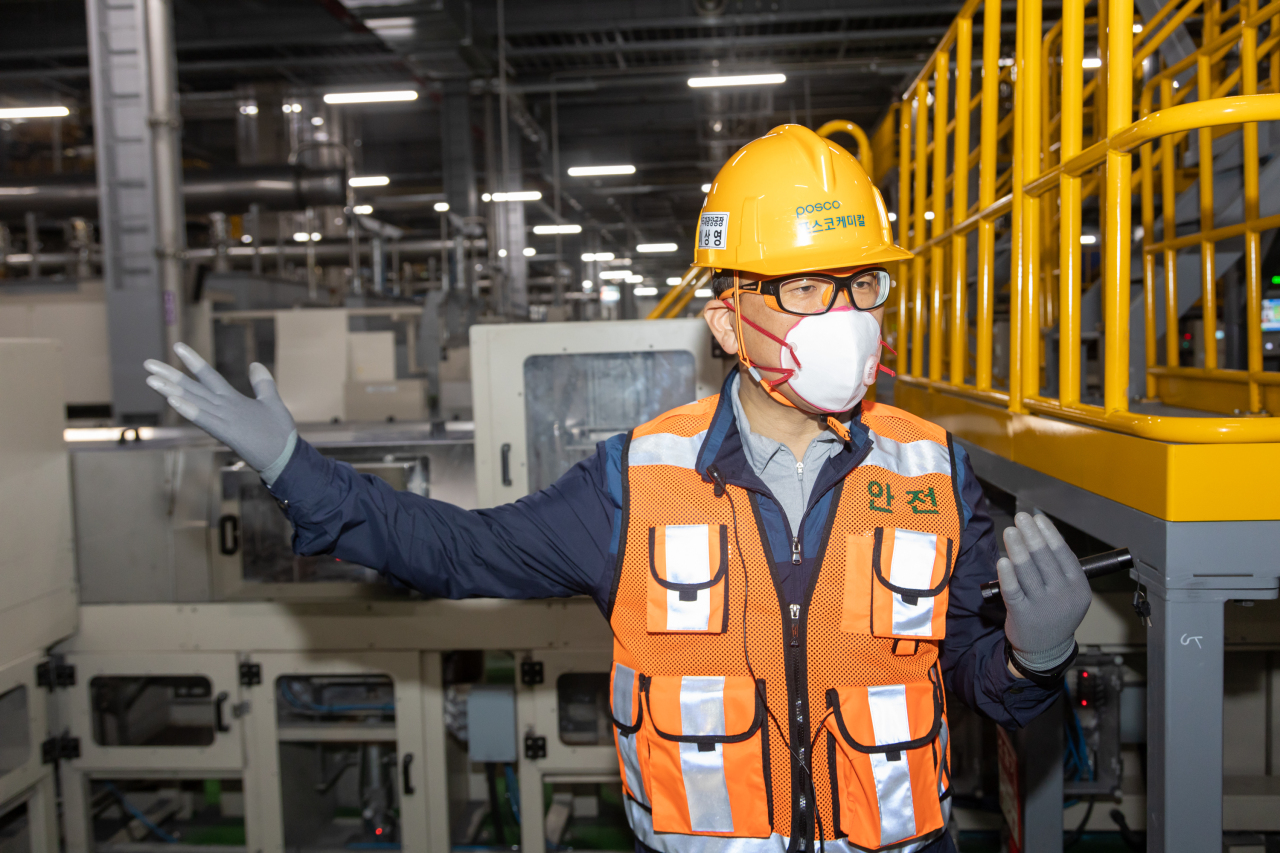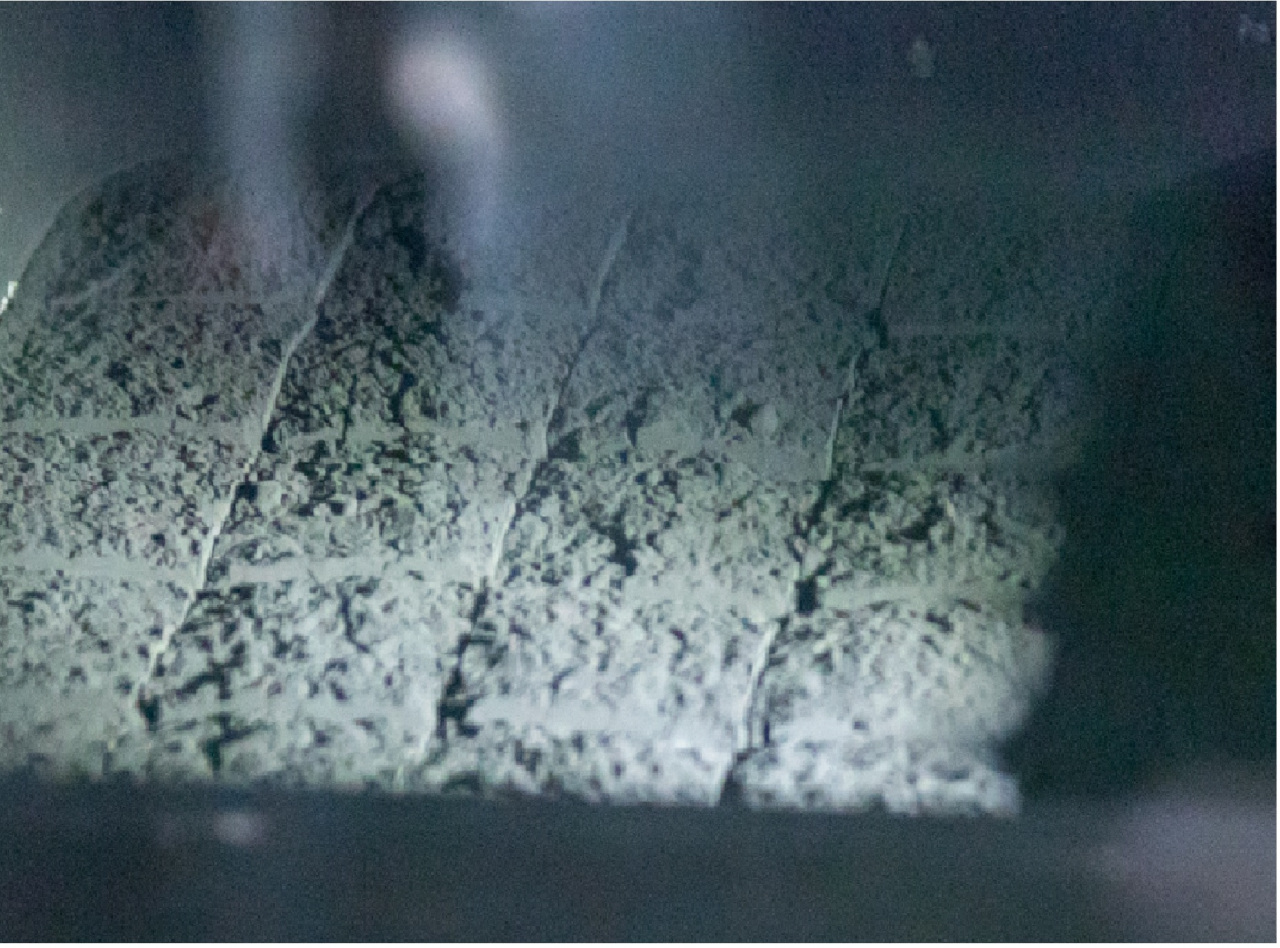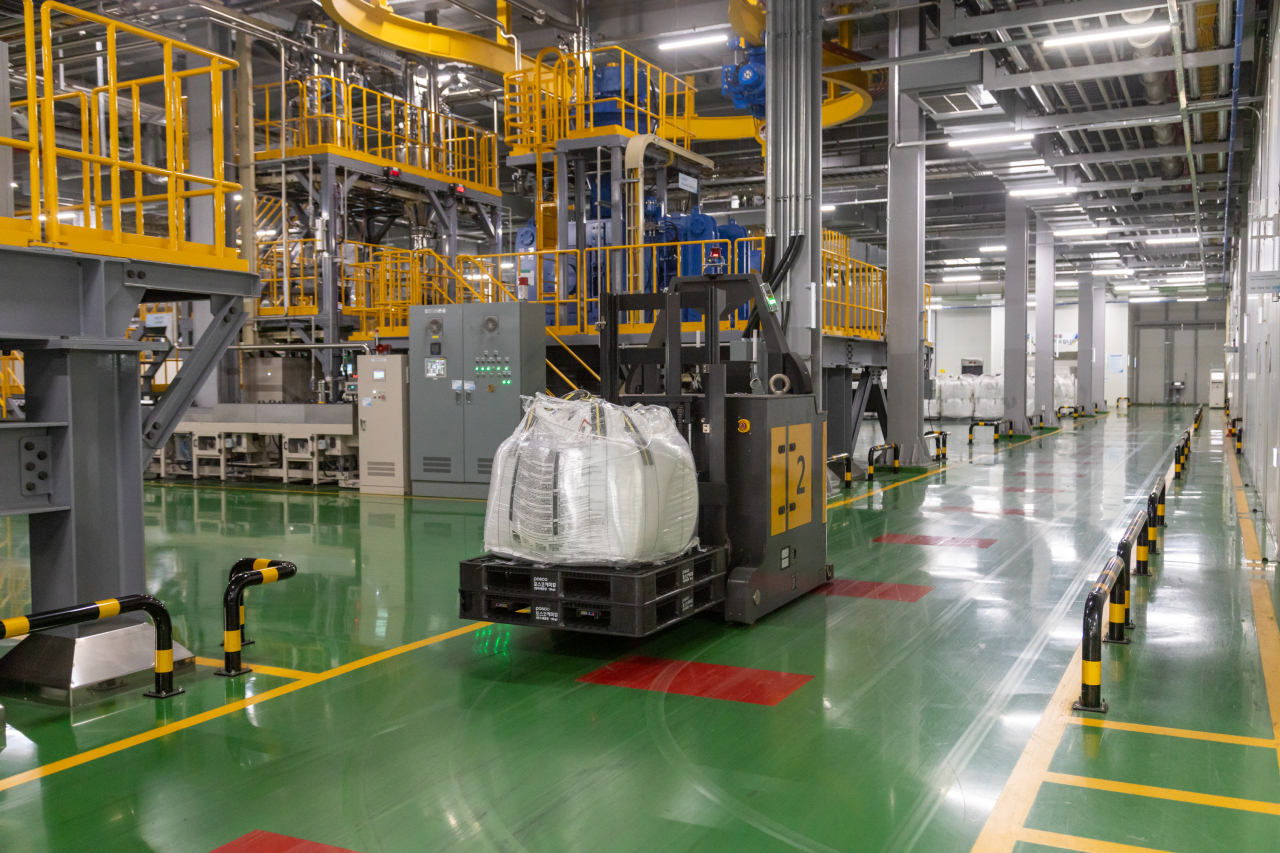[From the Scene] Posco Chemical bets future on battery materials
With aggressive expansion plans, South Korean firm aims for global No. 1 spot in cathodes
By Kim Byung-wookPublished : April 18, 2021 - 15:11

GWANGYANG, South Jeolla Province -- The moment reporters stepped inside Posco Chemical’s battery materials plant the size of 20 football fields, they were immediately overwhelmed by a howling sound echoing inside the facility every 30 seconds.
The mysterious noise emitting from the beige-painted equipment sounded as if whales were crying in pain.
“It’s the ultrasound carving cathode particles,” Kim Woo-joong, a safety manager of the plant, shouted over the din, through his tightly-strapped white 3M dust mask.
The press tour on Tuesday at Posco Chemical’s 30,000-ton cathode plant in Gwangyang, South Jeolla Province, was like visiting a giant automatic bakery. On conveyor belts, rectangular plastic dishes carrying black granules -- which looked like Oreo cookie crumbles -- were baked inside ovens in extremely high temperatures to be transformed into cathodes, one of the four key components of lithium-ion batteries along with anodes, separators and electrolytes.
After being heated, coated and shredded for 48 hours, the black particles, or cathodes, will be delivered to major lithium-ion battery makers including LG Energy Solution.
The cathodes are a mix of heavy metals consisting of nickel, cobalt, manganese and aluminum. The greater the ratio of nickel inside cathodes, the more powerful lithium-ion batteries become, which translates into a greater driving range for electric vehicles.

Posco Chemical will supply cathodes containing 89-90 percent nickel to Ultium Cells, a US joint venture between LGES and General Motors, which is building a 35-gigawatt-hour factory in Ohio, set for commercial operation next year.
According to UBS, a global finance and research firm based in Zurich, the global EV market would grow tenfold in the next decade, from 3 million unit sales last year to 35.5 million in 2030.
Expecting a surge in global demand of cathodes, Posco Chemical aims to ramp up its annual production capacity to 100,000 metric tons by 2023 from the current 30,000. One ton of cathodes cost $20,000 to $30,000 and can power 11 electric vehicles.
With the rapid market transition to EVs and as battery makers struggle to keep up with the explosive demand, global automakers have recently announced plans to produce some of their own batteries.
For materials providers like Posco Chemical, that is a positive development, according to Chung Dae-hun, head of the firm’s energy material business unit.
“This internalization movement would help accelerate the transition to EVs and would hopefully present a lot of opportunities for us to find new customers,” he said.
The company is considering building a new production base in Europe, the US or both, Chung added.
“If under the same conditions, we’ll choose a location next to our client’s manufacturing facilities,” he said.

For that, Posco Chemical has already secured a fund of 1.27 trillion won ($1.13 billion) via a new stock issue in January. As one cathode plant typically costs approximately 300 billion won, the money would be enough to construct four.
With a drastic scaling up, the firm aims to take a dominant position in the global cathode materials market, which is expected to grow from $17.41 billion in 2017 to $28.28 billion by 2027. Current market leaders and potential rivals are Belgium’s Umicore and Japan’s Sumitomo, but both of them control no more than 10 percent of the market.
Posco Chemical is also doubling down on its anode business. As the world’s No. 4 anode manufacturer with a market share of 11 percent, the company aims to increase its annual anode production capacity from the current 44,000 tons to 121,000 tons by 2023. Anodes, which are made of graphite and a small amount of silicon, determine the lifespan and stability of lithium-ion batteries.
Posco Chemical’s ultimate goal is to control 20 percent of both markets and become the No. 1 EV battery raw material player through establishing cathode and anode production capacities worth 400,000 tons and 260,000 tons by 2030, respectively.
However, one question mark lingers over for Posco Chemical’s ambitious expansion plan -- what if new types of batteries come out and changes the paradigm of the market?
According to multiple researches, three types of chemistries -- NCM (nickel cobalt manganese), NCA (nickel cobalt aluminum) and LFP (lithium-iron phosphate) -- will lead EV battery market trends until 2030. After then, experts predict that three promising candidates -- lithium-air, lithium-sulfur and lithium-metal batteries -- will challenge conventional ones.
The three potential candidates are composed of completely different materials, and if commercialized, can pose threats to Posco Chemical’s strategies focused on the NCM chemistry.
Chung said the firm is staying vigilant on future directions of the global battery market, but for now, it is convinced that the NCM is where it needs to focus on.
“The three new batteries use metal for anodes instead of graphite. Our research and development team has developed metal anodes and found out they are 10 times more expensive than graphite anodes,” he said.
It won’t be easy for new types of batteries, whatever they would be, to replace batteries of today because of the price competitiveness, the official added.
By Kim Byung-wook (kbw@heraldcorp.com)






![[From the Scene] Monks, Buddhists hail return of remains of Buddhas](http://res.heraldm.com/phpwas/restmb_idxmake.php?idx=644&simg=/content/image/2024/04/19/20240419050617_0.jpg&u=20240419175937)







![[From the Scene] Monks, Buddhists hail return of remains of Buddhas](http://res.heraldm.com/phpwas/restmb_idxmake.php?idx=652&simg=/content/image/2024/04/19/20240419050617_0.jpg&u=20240419175937)

![[KH Explains] Hyundai's full hybrid edge to pay off amid slow transition to pure EVs](http://res.heraldm.com/phpwas/restmb_idxmake.php?idx=652&simg=/content/image/2024/04/18/20240418050645_0.jpg&u=20240419100350)

![[Today’s K-pop] Illit drops debut single remix](http://res.heraldm.com/phpwas/restmb_idxmake.php?idx=642&simg=/content/image/2024/04/19/20240419050612_0.jpg&u=)